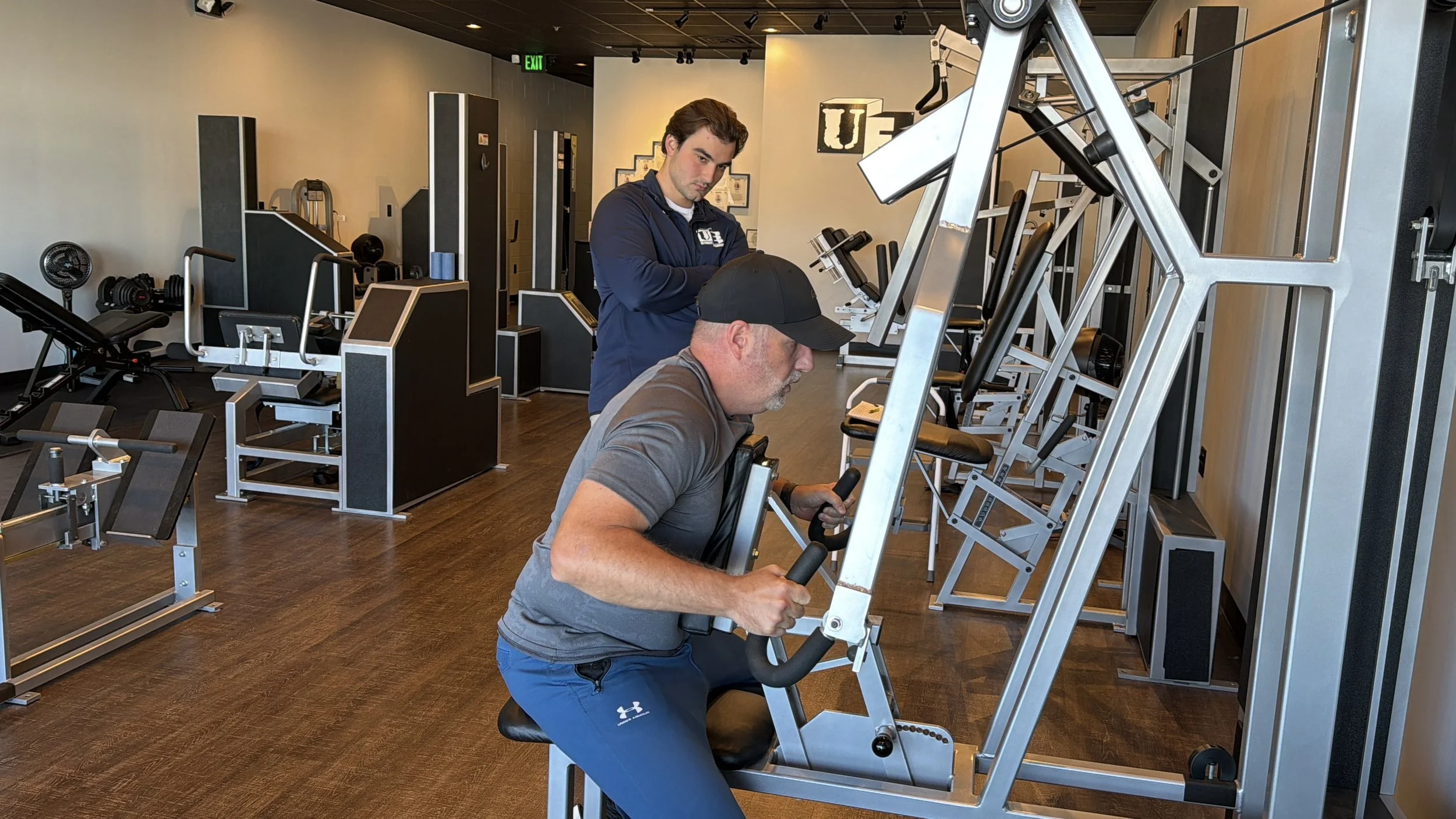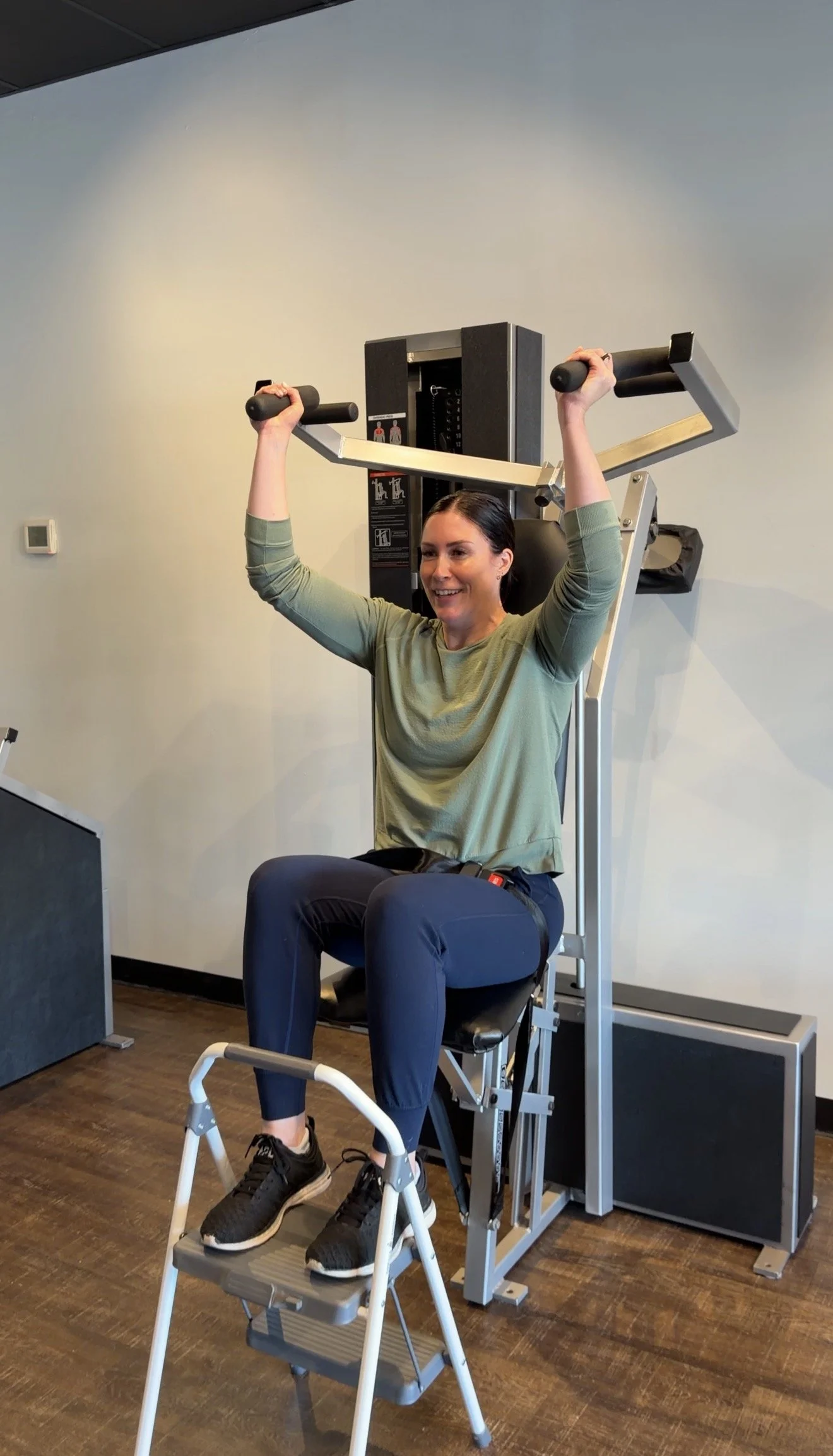
WHY IT WORKS
1. The Premise: Your Time + Real Results
You don’t need to spend hours in the gym to get meaningful strength and health improvements. At Ultimate Exercise, we believe your time is too valuable for workouts that don’t deliver. That’s why we’ve honed a protocol that lets busy professionals and parents build strength, confidence and long-term resilience in just one or two efficient sessions each week.
2. The Science Behind the Method
Our approach is grounded in rigorous scientific research and has been refined over decades. Doug McGuff’s Body by Science establishes the evidence for high-intensity, low-frequency strength training—demonstrating that short, intense workouts can trigger muscular and metabolic adaptations more effectively than long, lower-intensity routines. (Google Books)
We use those principles to deliver workouts that:
Drive muscle stimulation until near-complete fatigue (the stimulus your body adapts to).
Measure meaningful progress in time-under-load rather than simply reps or hours.
Respect the fact that intense stimulus needs sufficient recovery—so fewer but more effective sessions are smarter.
3. The Process: Your 20‐Minute Commitment
Here’s how your experience unfolds:
Free Intro Session – You book a complimentary intro workout where we get to know your needs, goals and current fitness level.
One-on-One Training – Each session is guided by an expert trainer in a private environment, ensuring safety, focus, and maximum intensity.
Efficient Execution – Your workout takes just 20 minutes (often even less) and uses a curated sequence of machines and movements to get you stronger faster.
Results That Matter – Because we’re focused on high-quality stimulus and full recovery, you’ll begin to feel stronger quickly, and you’ll start seeing visible changes within 8-12 weeks.
4. Why This Works for Busy Professionals (and Parents)
Minimal time commitment: One or two 20-minute sessions per week fit into busy schedules—even when you’ve got meetings, school drop-offs or family demands.
Maximum results: You’re getting the same—or better—benefit than many get from multiple hours in the gym, thanks to the intensity and design of the protocol.
Longevity & health-focus: This method is not just about looking good now—it’s about preserving strength, mobility and vitality as you get older. Many clients have reported doing things now they thought weren’t possible.
5. What to Expect
When you arrive, your trainer will be ready: equipment is pre-set, your session is guided, so you don’t waste time figuring things out.
You’ll work through a series of machines or movements with controlled, slow-and-steady technique—maximizing muscle recruitment, minimizing risk of injury.
After the workout, you’ll leave knowing you’ve worked hard—and your body begins the adaptation process. Since the stimulus is intense, you don’t need daily sessions.
As you progress, your trainer will monitor your performance, adjust the stimulus, and keep you on track to stronger and sustainable results.

6. Why Choose Ultimate Exercise
Proven method – Our protocol is built on decades of research and thousands of trainees.
Personalized coaching – Every session is supervised one-on-one for maximum effectiveness and safety.
Time-efficient & schedule-friendly – Because you train smart, fewer sessions are needed—and your time is respected.
Results that last – Clients report improved strength, better mobility, decreased risk of injury—and a training approach they can sustain for years.
7. Ready to Get Started?
Book your free intro workout today and experience how a single 20-minute session can be the start of lasting strength, confidence, and health.
“It’s the best decision I’ve made all year.”
- Jason T.


